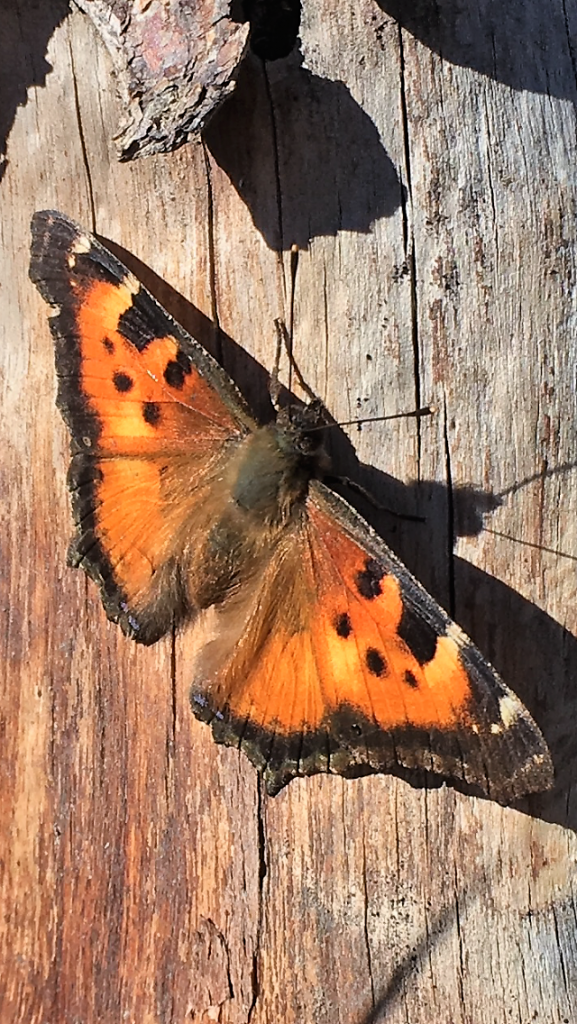Cathy Shill from JH Nordic Alliance partner, Hole Hiking Experience, shared her observations of nature, and its beautiful evolution from fall into winter:

October and early November offer perfect temperatures, blue skies, bit of moisture, frosty morning and wildlife sightings. Fall is an ideal time to look for animals. Moose are often seen along waterways. Elk graze in the meadows. Bison enjoy sage flats. Some bird migrate south , some gather seeds to prepare for the long winter ahead. Cool Fall temperatures keep them active.
In our valley as daylight changes and days shorten, winter can begin at any time so animals are active and preparing for this change. Throughout this season of transition, it is great to visit mixed habitats to view wildlife as they move to winter territories. Since winter is a hard season for all species who rely on plants, you see Moose, Elk, and Deer actively foraging in the Fall. They gain weight to survive the lean season of winter
In October, I had the opportunity to spend a week in the mountains. I highly recommend a few days to replenish one’s spirit. To leave the phone and computer behind where all is quiet. As you allow yourself to settle, you begin to observe. It is amazing to immerse oneself in nature. A large Mule Deer herd of does and fawns visited daily. The young fawns looked wide eyed with perked ears to smell and sense me. To be afraid or not? I would breath and send peace and love. They remained and realized that I wasn’t a threat. To be one with it all. A Moose family came to lick salt, forage, and rest in the shade of Lodgepole Pine. A wolf called at night. A fellow hiker saw a bear. Nature all around. Mountain Bluebirds caught my eye as they flitted about the sagebrush. Heading to southern territories with bursts of blue. A Short-eared Owl filled the night with its’ call. The Milky Way burst with stars and the tendril of infinite light. It was time for me. Time for oneself, alone time that benefits us all.
During a sunny day this month, a Milbert’s Tortoiseshell Butterfly and I shared a ray of sun. We both enjoyed the warmth. Both Milbert Tortoiseshell and Mourning Cloak butterflies overwinter in the Greater Yellowstone Ecosystem. The adult butterfly overwinters to emerge in Spring to mate. This period of dormancy is called diapause and it is a suspended period of development. Photoperiod or length of daylight spur the butterflies to seek refuge to survive the extremes of winter. Both are within the Brush-footed Butterfly family and all six species overwinter as adults. Look for the Milbert’s Tortoiseshell near moist locations and they are common in most of North America.
Daylight savings time begins. The month ends with wintry weather. Rain/snow mix in the valley and snow in the high country. During this season of change, it is nice to have a good book near to enjoy the wetter days and your hiking shoes nearby when the sun shines.
Tour Suggestion-
Upper elevations are white and some have taken the first ski turns of the season at Grand Targhee. Hiking still nice in the valley so the LSR preserve, Bearpaw/Trapper Lake near Leigh Lake, Bradley and Taggert. Trails will be muddy with the current freeze/thaw cycle. Some valley roads close November 1 and parking is banned overnight on town streets. Choose your activity based on the weather and don’t bypass the opportunity to relax on that cold rainy day.


